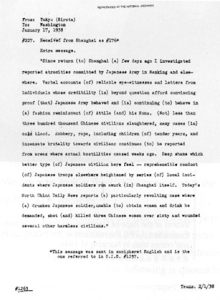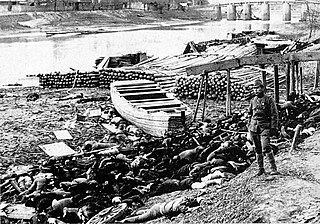
The Nanjing Massacre or the Rape of Nanjing was the mass murder of Chinese civilians in Nanjing, the capital of the Republic of China, immediately after the Battle of Nanking in the Second Sino-Japanese War, by the Imperial Japanese Army. Beginning on December 13, 1937, the massacre lasted six weeks. The perpetrators also committed other war crimes such as mass rape, looting, and arson. The massacre is considered to be one of the worst wartime atrocities.

The International Military Tribunal for the Far East (IMTFE), also known as the Tokyo Trial and the Tokyo War Crimes Tribunal, was a military trial convened on 29 April 1946 to try leaders of the Empire of Japan for their crimes against peace, conventional war crimes, and crimes against humanity, leading up to and during the Second World War. The IMTFE was modeled after the International Military Tribunal (IMT) at Nuremberg, Germany, which prosecuted the leaders of Nazi Germany for their war crimes, crimes against peace, and crimes against humanity.
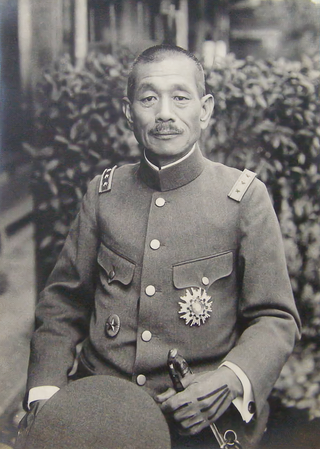
Iwane Matsui was a general in the Imperial Japanese Army and the commander of the expeditionary force sent to China in 1937. He was convicted of war crimes and executed by the Allies for his involvement in the Nanjing Massacre.

Sugamo Prison was a prison in Tokyo, Japan. It was located in the district of Ikebukuro, which is now part of the Toshima ward of Tokyo, Japan.

The Dachau trials, also known as the Dachau Military Tribunal, handled the prosecution of almost every war criminal captured in the U.S. military zones in Allied-occupied Germany and in Allied-occupied Austria, and the prosecutions of military personnel and civilian persons who committed war crimes against the American military and American citizens. The war-crime trials were held within the compound of the former Dachau concentration camp by military tribunals authorized by the Judge Advocate General of the U.S. Third Army.
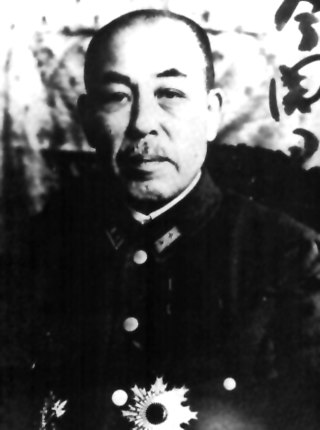
Rensuke Isogai was a general in the Imperial Japanese Army and Governor of Hong Kong under Japanese occupation from February 20, 1942, to December 24, 1944.
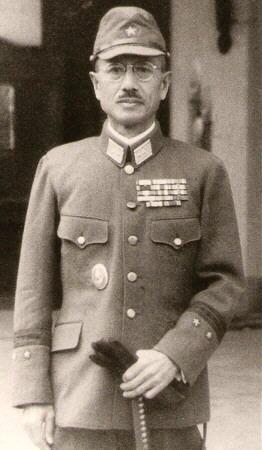
Hisakazu Tanaka was a lieutenant general in the Imperial Japanese Army, and governor of Japanese-occupied Hong Kong in World War II. His name is occasionally transliterated "Tanaka Hisaichi".
Katsuichi Honda is a Japanese journalist and author most famous for his writing on the Nanjing Massacre. During the 1970s he wrote a series of articles on the atrocities committed by Imperial Japanese soldiers during World War II called "Chūgoku no Tabi". The series first appeared in the Asahi Shimbun.

The hundred man killing contest was a newspaper account of a contest between Toshiaki Mukai and Tsuyoshi Noda, two Japanese Army officers, during the Japanese invasion of China, over who could kill 100 people the fastest while using a sword. The two officers were later executed on charges of war crimes and crimes against humanity for their involvement.

Pang Bingxun was a high-ranking nationalist military commander who fought against the Imperial Japanese Army and Chinese Communist Army. He stopped the IJA 5th Division led by General Seishirō Itagaki, one of the principal architects of the 1931 Manchurian incident, from capturing Linyi and converging with General Rensuke Isogai's IJA 10th Division at Tai'erzhuang District, foiling their plan to assault Xuzhou.
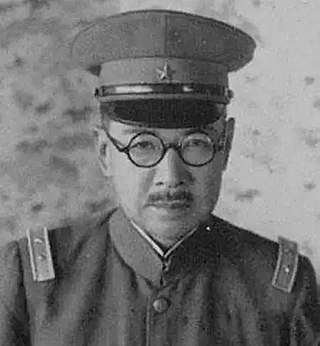
Hisao Tani was a lieutenant general in the Imperial Japanese Army in the Second Sino-Japanese War and a convicted war criminal as well as crimes against humanity. Forces under his command committed the 1937 Nanjing Massacre. Tani was tried in the Nanjing War Crimes Tribunal and executed.
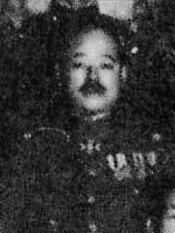
Takuma Nishimura was a Japanese army general in the Imperial Japanese Army during World War II, active in the invasion and occupation of British Malaya. After the Japanese surrender, he was tried and convicted in British Singapore as a war criminal for his role in the Sook Ching massacres. After four years imprisonment he was handed to Australian authorities for trial on the Parit Sulong Massacre and executed by hanging by the then Australian Territory of Papua and New Guinea.

The Memorial Hall of the Victims in Nanjing Massacre by Japanese Invaders is a museum to memorialize those that were killed in the Nanjing Massacre by the Imperial Japanese Army in and around the then-capital of China, Nanjing, after it fell on December 13, 1937. It is located in the southwestern corner of downtown Nanjing known as Jiangdongmen (江东门), near a site where thousands of bodies were buried, called a "pit of ten thousand people".
Don't Cry, Nanking, also known as Nanjing 1937, is a 1995 Chinese film about the 1937 Nanjing Massacre committed by the Imperial Japanese Army in the former capital city Nanjing, China.
Nanjing Massacre denial is the denial of the fact that Imperial Japanese forces murdered hundreds of thousands of Chinese soldiers and civilians in the city of Nanjing during the Second Sino-Japanese War, an extremely controversial episode in the history of Sino-Japanese relations. Most historians accept the findings of the Tokyo tribunal with respect to the scope and nature of the atrocities which were committed by the Imperial Japanese Army after the Battle of Nanjing. In Japan, however, there has been a debate over the extent and nature of the massacre with some historians attempting to downplay or outright deny that the massacre took place.
The Historiography of the Nanjing Massacre is the representation of the events of the Nanjing Massacre as history, in various languages and cultural contexts, in the years since these events took place. This historiography is disparate and sometimes contested, owing to conflicting currents of Chinese and Japanese nationalist sentiment and national interest, as well as the fog of war.
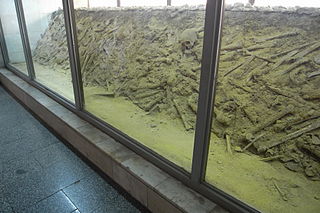
The total death toll of the Nanjing Massacre is a highly contentious subject in Chinese and Japanese historiography. Following the outbreak of the Second Sino-Japanese War, the Japanese Imperial Army marched from Shanghai to the Chinese capital city of Nanjing (Nanking), and though a large number of Chinese POWs and civilians were slaughtered by the Japanese following their entrance into Nanjing on December 13, 1937, the precise number remains unknown. Since the late-1960s when the first academic works on the Nanjing Massacre were produced, estimating the approximate death toll of the massacre has been a major topic of scholarly debate.
The Philippine War Crimes Commission was a commission created in late 1945 by General Douglas MacArthur as Supreme Commander of the Allied Powers to investigate the war crimes committed by the Imperial Japanese Army and Imperial Japanese Navy during the invasion, occupation, and liberation of the Philippines. The investigation by the Commission led to the extradition, prosecution, and conviction of Class A, Class B, and Class C defendants in Manila, Tokyo, and other cities in East and Southeast Asia through the International Military Tribunal for the Far East.
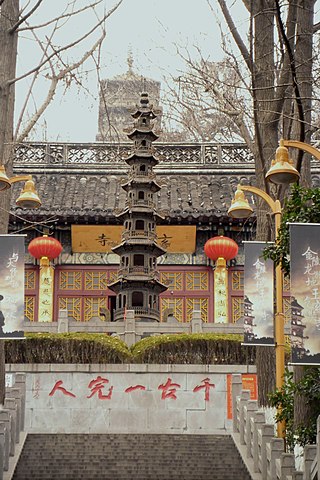
Xuanzang Temple is a Buddhist temple located within Jiuhua Mountain Park, in Xuanwu District, Nanjing, Jiangsu, China.
